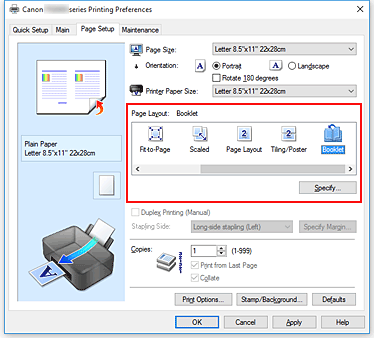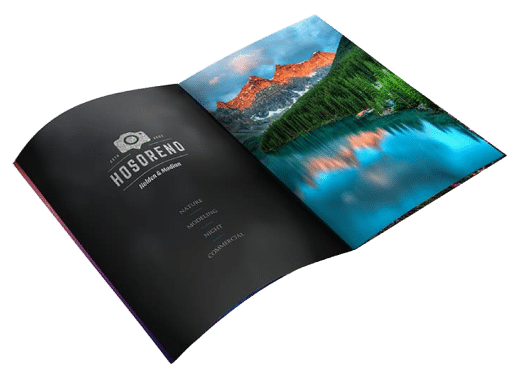The Most Common Mistakes to Avoid in Your Booklet Printing Design
Wiki Article
The Essential Guide to Recognizing Pamphlet Printing Options and Techniques
The procedure of brochure printing involves multiple factors to consider that can substantially affect the final product. From selecting the ideal style and size to understanding the subtleties of binding techniques, each choice plays an important role. In addition, factors such as paper stock and printing strategies additional influence the performance of the brochure. As one navigates these alternatives, it ends up being important to grasp just how they interconnect and what that means for the general outcome.Recognizing Brochure Sizes and styles
When considering pamphlet printing, understanding the numerous styles and dimensions available is crucial for accomplishing the desired presentation. Pamphlets can be created in countless styles, consisting of saddle-stitched, spiral-bound, and perfect-bound, each offering distinct advantages. Common dimensions range from common letter (8.5 x 11 inches) to smaller choices like A5 (5.8 x 8.3 inches), enabling versatility based upon content and target audience.Selecting the proper dimension can influence both the design and viewers engagement. Bigger dimensions might fit aesthetically driven material, while smaller sized layouts may be more portable and straightforward. In addition, the variety of pages impacts the selection of binding method, as thicker booklets may need tougher bindings. Ultimately, understanding these elements permits for an extra customized approach, guaranteeing that the last item straightens with the desired message and aesthetic, enhancing the general efficiency of the interaction.Selecting the Right Paper Supply

Binding Approaches: Factors To Consider and alternatives
When it comes to binding techniques for pamphlets, numerous options are offered, each with unique benefits. Saddle stitch binding offers an affordable option for thinner pamphlets, while excellent binding techniques offer an even more refined appearance for thicker magazines. Wire-O binding stands out for its resilience and simplicity of usage, making it excellent for documents that require flexibility.Saddle Stitch Binding
Saddle stitch binding provides a functional and economical remedy for constructing pamphlets, making it a preferred selection amongst authors and organizations. This binding approach entails folding sheets of paper in fifty percent and stapling them along the fold line, producing a neat and well organized appearance. Usually appropriate for booklets with a lower web page matter, saddle stitching is optimal for magazines, brochures, and educational products. The simplicity of this technique allows for fast manufacturing and is frequently preferred for short runs or marketing things. It is vital to note that saddle stitch binding might not be appropriate for thicker booklets, as the back may not hold up under increased weight. On the whole, it stays a reputable option for several printing jobs.Perfect Binding Techniques
Perfect binding is an extensively utilized strategy that supplies a polished and specialist finish to magazines and booklets. This approach involves gluing the web pages together at the spinal column using a strong adhesive, enabling a clean side and the ability to hold a bigger variety of web pages compared to saddle stitching. Perfect binding is specifically appropriate for thicker pamphlets, such as brochures and yearly reports, where a strong, level spine is preferred. In addition, it provides the alternative for a printed cover that can be developed to boost visual charm. Considerations such as page matter, paper weight, and the planned usage of the booklet ought to be taken right into account, as they can influence durability and general top quality.Wire-O Binding Choices
Wire-O binding, recognized for its sturdiness and adaptability, supplies an excellent choice for brochures that need very easy web page transforming and a specialist look. This binding approach utilizes a series of metal loopholes that hold pages safely, enabling them to exist flat when open. It is especially appropriate for catalogs, guidebooks, and discussions because of its robust nature. Wire-O binding is offered in various colors and sizes, suiting different page counts and densities. Furthermore, it permits the inclusion of tabs and covers, boosting the brochure's general aesthetic. Factors to consider for Wire-O binding consist of the option of wire shade, the size of the loops, and the level of modification preferred, all of which can greatly influence the last product's appearance and functionality.Digital vs. Offset Printing: Which Is Best for You?
When picking a printing technique for booklets, recognizing the distinctions between electronic and balance out printing is important. Digital printing makes use of contemporary technology to generate premium prints rapidly and cost effectively, making it suitable for short runs or tasks needing quick turn-around times. It permits customization, offering the ability to publish on-demand with very little waste.In comparison, balance out printing is a traditional technique that masters generating large amounts with consistent high quality. It involves transferring ink from a plate to a rubber covering, then to the paper, which causes specific details and lively colors. Balance out printing typically needs longer configuration times and is extra affordable for larger volumes.Ultimately, the choice between electronic and counter printing depends on task requirements, budget plan, and preferred amount. For tiny, time-sensitive projects, digital may be the very best selection, while countered may be more suitable for larger, top notch manufacturings.
Designing Your Booklet: Tips and Best Practices
When developing a booklet, careful official website focus to format, font style selection, and color use can greatly enhance its performance. A well-structured format guides the reader's eye, while appropriate typefaces assure readability and communicate this hyperlink the desired tone. Additionally, reliable use color can stimulate feelings and highlight key details, making the total design extra impactful.Selecting the Right Design
Exactly how can one successfully choose the right format for a brochure? It is necessary to assess the booklet's objective and target audience. A clean, arranged layout boosts readability and interaction. Utilizing a grid system can assist in lining up elements constantly, creating a specialist appearance. In addition, incorporating aesthetic hierarchy with varying sizes and positionings of images and message can guide the viewers's eye and emphasize crucial information. It is likewise essential to leave sufficient white room, which prevents congestion and permits for better emphasis. Evaluating various formats via mock-ups can provide insight right into exactly how the design executes in real-world circumstances, ensuring that the final product satisfies both aesthetic and useful requirements.Selecting Proper Fonts
A well-chosen font can greatly boost the general style of a pamphlet, matching the layout and strengthening the content's message. The selection of fonts ought to think about readability, particularly for body text, as it ensures the info comes to all viewers. Sans-serif typefaces are usually favored for electronic layouts, while serif typefaces can offer a standard feeling in printed materials. It's recommended to limit font choices to 2 or 3 to preserve visual coherence. Additionally, typeface dimension plays a crucial function; headings ought to be distinct however not overwhelming, while body text should fit for analysis. When choosing fonts, alignment with the pamphlet's style and target audience is important for reliable interaction and aesthetic allure.Reliable Use Shade
Color works as an effective tool in brochure design, forming perceptions and leading viewers emotions. It can stimulate feelings of depend on, excitement, or peace, depending upon the tones chosen. Developers need to think about shade concept principles, making sure that the picked palette lines up with the pamphlet's message and target market. For instance, using warm colors like red and orange can create seriousness, while cooler tones like blue and green foster tranquility.Additionally, comparison plays a vital role; corresponding shades can boost readability and aesthetic appeal. Consistency in color usage across pages further strengthens brand identity and cohesion. Ultimately, effective color implementation not only captures attention but also reinforces the booklet's purpose, making it a vital element of successful design.
Finishing Touches: Coatings and Special Effects
While several take into consideration the web content and format of a pamphlet one of the most important aspects, the completing touches, such as finishings and special effects, play a vital role in enhancing its overall allure. Coatings can supply security and sturdiness, guaranteeing that the booklet withstands damage. Matte coatings provide a sophisticated, non-reflective surface area, while shiny finishings can make colors show up more appealing and vivid. Unique effects, why not look here like embossing or aluminum foil stamping, include a responsive dimension that can develop an unforgettable impression. These strategies can highlight particular locations, accentuating vital info or creating aesthetic interest. Furthermore, UV covering can give a high-shine surface that elevates the general look.Together, these finishing touches not only improve the brochure's visual but likewise interact professionalism and interest to information, ultimately leaving a long-term effect on the viewers.Cost Factors To Consider for Pamphlet Printing
Recognizing the various cost factors to consider for brochure printing is important for organizations and organizations intending to enhance their spending plans. Key aspects affecting costs include the selection of binding, ink, and paper methods. Better products, such as premium paper or specialized inks, normally raise the overall expense. Furthermore, the dimension and web page matter of the booklet play a significant function; bigger pamphlets require more resources and time to produce.Another essential factor to consider is the printing method, whether electronic or countered, as each has its very own rates framework and viability for various quantities. Organizations ought to also factor in layout expenses, which can differ based on complexity and the use of expert solutions. Inevitably, delivery and handling costs can include in the total amount, specifically for huge orders. By evaluating these elements, companies can make enlightened choices that line up with their economic capacities while attaining the preferred high quality in their printed materials.Frequently Asked Questions
What Are the Ecological Influences of Pamphlet Printing?
The ecological effects of booklet printing include logging from paper manufacturing, carbon discharges from transportation, and waste generation from discarded products - Booklet Printing. Lasting methods, such as using recycled paper and environmentally friendly inks, can mitigate these effectsJust How Can I Make Sure Color Accuracy in My Pamphlet?
To ensure color precision in a brochure, one ought to make use of adjusted monitors, use specialist color accounts, carry out test prints, and pick top notch printing services that offer shade matching and proofing options for ideal results.What Is the Typical Turn-around Time for Brochure Printing?
The regular turn-around time for booklet printing differs depending on the intricacy and quantity - Booklet Printing. Usually, it ranges from a couple of days to two weeks, affected by aspects such as printing techniques and finishing demandsAre There Minimum Order Quantities for Brochure Printing?

Can I Publish Pamphlets in Multiple Languages?
Printing booklets in numerous languages is feasible. Many printing services provide choices for multilingual or bilingual designs, enabling reliable interaction. Careful planning warranties that create elements fit different languages without endangering readability or appearances. Additionally, elements such as paper supply and printing strategies more affect the performance of the pamphlet. When taking into consideration pamphlet printing, recognizing the numerous layouts and dimensions readily available is crucial for attaining the wanted discussion. When choosing a printing approach for pamphlets, recognizing the distinctions in between digital and balance out printing is vital. Furthermore, the size and page matter of the pamphlet play a considerable function; larger pamphlets call for even more resources and time to produce.Another essential consideration is the printing strategy, whether electronic or balanced out, as each has its own pricing framework and suitability for different amounts. The ecological effects of booklet printing consist of deforestation from paper production, carbon exhausts from transport, and waste generation from discarded products.Report this wiki page